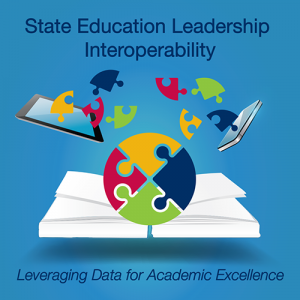Priorities
State Interoperability Background
State leadership is essential for developing a shared vision and empowering leaders within a state and across states to ensure all students are college and career ready and prepared for living and working in the digital age. It is critical to engage state leaders across departments from a variety of roles, such as curriculum, assessment, technology, budget, and special education, in collaborative planning discussions to determine how interoperability can support the vision and goals of the state agency and the capacity to achieve those goals. It is equally important that state leaders, especially in technology and instruction, share ideas and resources across states, as interoperability is not a “single state” issue.
What is Interoperability?
Interoperability is the seamless, secure, and controlled exchange of data between applications. Interoperability allows data to easily flow among applications that are developed for different purposes using a standardized vocabulary, structure, and cadence. Conversely, connecting systems and applications for the sharing of data that requires a separate application to translate the data is integration and not interoperability.
Why Interoperability?
The systems we use to collect, manage, analyze and report on data are often disconnected and don’t work well together. Most states have systems from multiple vendors and their districts have additional systems and applications which historically have had limited or no underlying data standards. In these cases, most systems/applications have their own internal model and integration methods that require a patchwork of connections at the state and/or local level. Consequently, there are gaps in the integration and interfaces among disparate applications and many of these systems and applications are not interoperable.
- Without interoperability, student information cannot be transferred seamlessly, disrupting student progress.
- States and districts incur significant costs and staff time trying to integrate systems that are not interoperable.
- Systems that are not interoperable force leaders to make decisions between desired functionality to support education objectives and the bottom line impact to budget.


